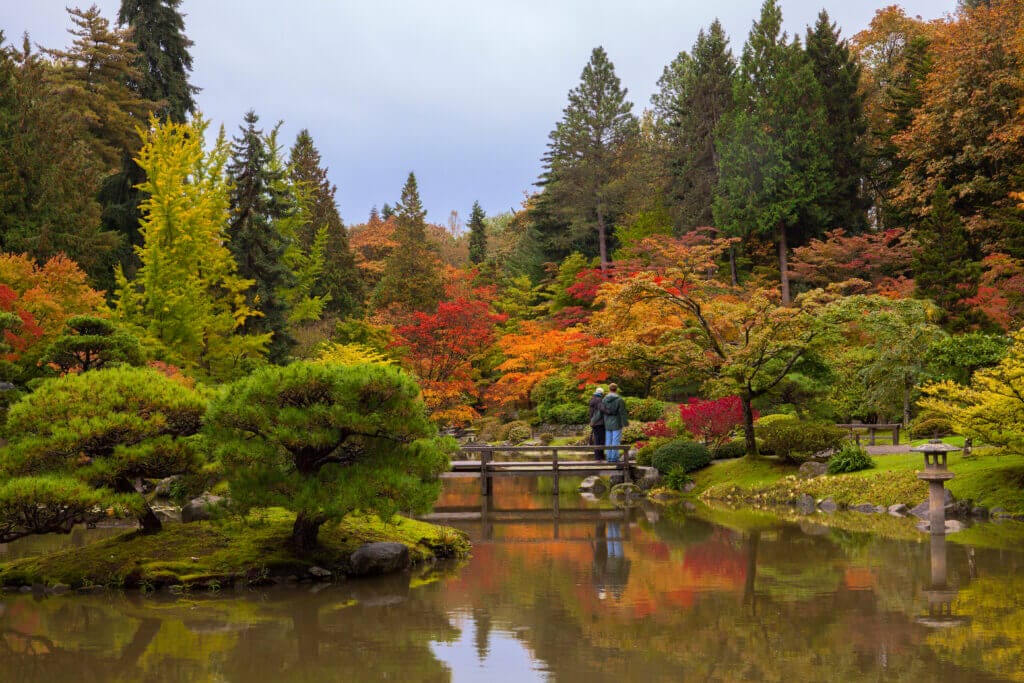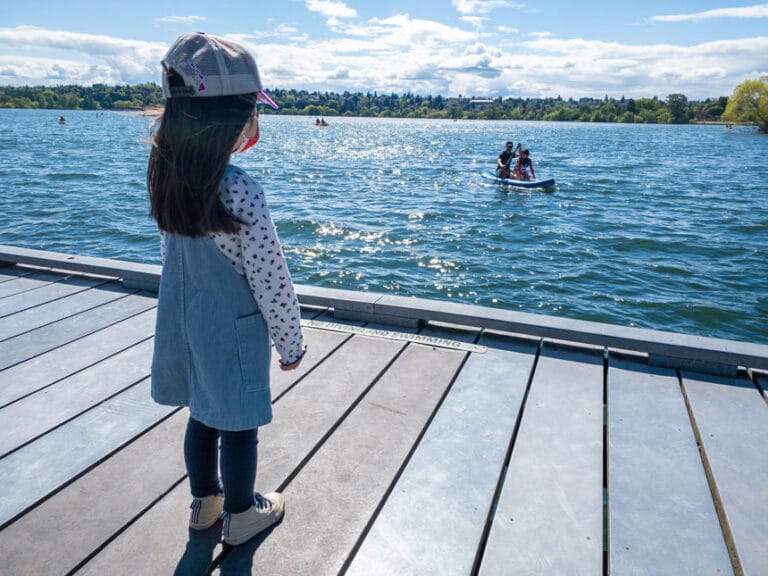Visiting the Seattle Japanese Garden with kids is an enchanting experience for families looking for a mix of tranquility and adventure. Tucked away in the expansive Washington Park Arboretum, this 3.5-acre garden stands as a prime example of classical Japanese garden design, offering a peaceful haven since its public debut in 1960. It’s the perfect spot for both young explorers and adults to experience the serene beauty and intricate artistry of one of North America’s most esteemed Japanese gardens. Plus, kids will love the chance to feed the fish in the koi pond—a simple joy that’s sure to create lasting memories.
Table of Contents
Journey Through Natural Beauty
As you step into the garden, a winding path invites you and your family on a magical journey around a central pond. This path is not just a walkway but a gateway into various landscapes inspired by the natural beauty of Japan—mountains, forests, waterfalls, rivers, lakes, islands, and the sea unfold before you. The meticulously arranged stones, flowing water, traditional lanterns, quaint bridges, and detailed buildings come together to create a peaceful ambiance. It’s an ideal setting for children to explore and adults to unwind, making it a perfect family outing.
Can I Feed The Koi Fish?
Absolutely, kids will love feeding the koi fish at the Seattle Japanese Garden! Available from May through September, between 10 AM and Noon, families can buy koi food directly from the Garden Gatehouse. The feeding takes place at specific spots—the wooden zigzag bridge and the wooden Moon Viewing platform—to ensure the health and safety of the fish. Please refrain from bringing any outside food, as it could harm the koi. Remember, this special activity is only offered during the summer months, so plan your visit accordingly to enjoy this delightful experience!
Engage with Nature and Culture
The Seattle Japanese Garden is not only about enjoying the sights. It offers a plethora of educational programs and cultural festivals that can enrich your visit. From Japanese gardening workshops to seasonal celebrations like the enchanting Maple Festival, there’s always something to learn and experience. These events provide a wonderful opportunity for children to immerse themselves in a different culture and for the whole family to gain new insights together.
A Sanctuary Through Seasons
One of the unique aspects of the Seattle Japanese Garden is its ever-changing beauty. Each season reveals new colors, shapes, and fragrances. Spring is particularly spectacular when the cherry blossoms and other flowers are in full bloom, painting the landscape in vibrant colors. Fall is equally impressive, with the fiery reds and golds of autumn leaves. The garden’s annual Maple Festival during early October is a highlight, celebrating the Japanese tradition of Momijigari (紅葉狩り), or “maple leaf hunting.”
A Stroll Through History: The Origins of Seattle Japanese Garden
Did you know the Seattle Japanese Garden is not only a beautiful destination but also steeped in history? Constructed in 1959, this serene spot was developed through the collaborative efforts of Seattle Parks and Recreation and the Arboretum Foundation. The city’s fascination with Japanese gardens traces back to 1909 during the Alaska Yukon Exhibition. This interest evolved significantly over the decades, with the Olmstead Brothers incorporating a Japanese garden concept into their design for the University of Washington Arboretum. By 1937, officials recognized the need for such a garden, but it wasn’t until 1957 that the Arboretum Foundation started fundraising for the project. Remarkably, the garden was completed in just four months with the aid of local Japanese-American gardeners. Today, it stands as a beloved and influential landmark that has shaped the design of Japanese gardens across the region. Make sure to visit and experience its historic charm!
Plan Your Visit: Hours and Parking
Where: The Seattle Japanese Garden is conveniently located at the southern end of the Washington Park Arboretum at 1075 Lake Washington Blvd E. This scenic location is easily accessible and provides a peaceful escape right in the heart of the city.
Parking Information:
Parking won’t be a hassle as the garden has its own onsite parking lot, and best of all, it’s free! However, the lot can fill up quickly, especially on weekends, so arriving early or visiting on a weekday might be a good idea to secure a spot.
Hours of Operation:
The garden opens at 10 am from Tuesday through Sunday, with hours adjusting seasonally. Detailed and current hours can be found on the garden’s official website. Note that the garden is closed from December through February for winter maintenance, and the last entry is allowed 45 minutes before closing time each day.
Admission Details:
Bringing kids along? Children under 5 years old enjoy free admission! Tickets can be purchased directly at the ticket booth upon arrival. The garden’s website is also a great resource for up-to-date information on admission fees, upcoming events, and any seasonal activities being offered.
Plan your visit to the Seattle Japanese Garden for a tranquil and enriching experience surrounded by stunning natural beauty and historical charm.
No Picnics Allowed: While picnicking is a popular way to enjoy cherry blossoms in many locations, the Seattle Japanese Garden follows a more traditional Japanese approach by not allowing picnics within the garden itself. However, this encourages visitors to enjoy their picnic lunches in other scenic spots, such as along Azalea Way in the Washington Park Arboretum, where more cherry blossoms await.
Thanks for Reading
The Seattle Japanese Garden offers a refreshing escape from the city life. It’s a place where families can slow down and appreciate the simpler pleasures of nature together. Whether you’re seeking a quiet afternoon away from screens and schedules or looking to enrich your children’s understanding of cultural beauty, the Seattle Japanese Garden promises a fulfilling and memorable outing for all ages.
For more details on events and planning your visit, check out the Seattle Japanese Garden’s official website. Embrace the opportunity to create lasting memories in one of North America’s most esteemed Japanese gardens.





